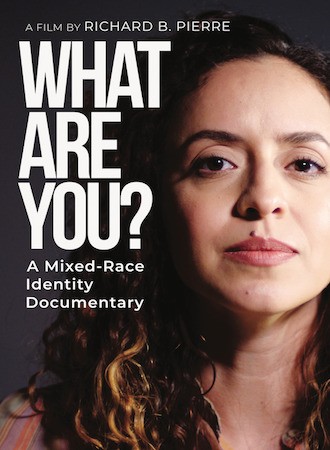
What Are You? 2019
Distributed by The Video Project, 145 - 9th St., Suite 102, San Francisco, CA 94103; 800-475-2638
Produced by Richard B. Pierre
Directed by Richard B. Pierre
Streaming, 20 mins
Middle School - General Adult
Diversity; Global Studies; Sociology
Date Entered: 03/24/2020
Reviewed by Monique Threatt, Indiana University, Herman B Wells Library, Bloomington, IN"I have a dream that my four little children will one day live in a nation where they will not be judged by the color of their skin but by the content of their character. I have a dream today." --Martin Luther King, Jr. “I Have a Dream.” Washington, D.C., August 28, 1963.
This intimate documentary short provides a safe space for 11 young Canadians to share their experiences of being multiethnic, multiracial, and multireligious in the 21st century. Interviewees emotionally discuss issues of self-confusion, insecurity, and not being “good enough” to be accepted by society. Throughout their young lives, questions arise about the texture of their hair and skin color. Far too often, they find themselves in the company of those who espouse views of inappropriate derogatory ethnic and racial slurs without knowledge of the interviewee’s identity. This constant ridicule leads to self-doubt and an awareness of being the “other/outsider.” An underlying theme of this film resonates with W.E.B. Du Bois’s “double-consciousness” – the mask of being able to straddle two worlds and trying to find acceptance not only in society, but also within oneself.
The film sets the stage for what it is like to interact with people who do not identify as anything other than Arab, Asian, Black, Indian, or White. However, the film misses the mark to provide concrete answers surrounding systemic racism in Canada. Perhaps, historical references are not the prime focus of the film, but rather the onus falls to the viewer to research the history of immigration and the treatment of people of color over the past century.
The young adults in the film eventually embrace their multiethnic background, however, at what cost. Over the years, many identify or “pass” as white to blend in with the dominate society, which can leave one to feel like an imposter within communities of color. Others address their experiences that range from intense racial tension from family members and neighbors to almost storybook levels of acceptance and cultural appreciation.
In closing, the cinematography and lighting seemingly appears to be intentional. Primarily shot with talking heads in a front of a dark screen. However, in an organic environment and during close-ups, interviewees take on a much lighter hue. The film serves as both circumstantial and educational as it serves to open dialogue about this subject without seriously delving into the history of racism in Canada. I recommend this film for middle school to adult audiences with an emphasis to discuss diversity as well as ethnic and gender studies, and sociology.